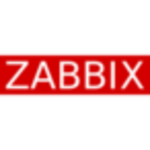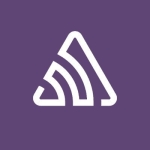What is our primary use case?
A typical use case with New Relic, it’s an APM tool. We basically put the agent in, the agent discovers, and then we feed it onto predefined monitors with a controlled baseline. That baseline will then feed the problems that New Relic is detecting into PagerDuty. PagerDuty is our incident management tool. PagerDuty has something called Event Orchestration.
The incident that comes down from New Relic has a payload. We look at the payload, the attributes, and define rules in Event Orchestration. Let’s say the team wants to implement suppressions on alerts, some mutations, delays. They want to actually cross-engage a different team. So there are a lot of use cases that come about once we get the incident into PagerDuty from New Relic. New Relic obviously has the conditional baseline, which can be adjusted as we go along. So, that’s basically a staple activity that we perform with New Relic. Among other advanced use cases, which will take me a bit to explain here.
What is most valuable?
It’s like any other APM tool. One of the most outstanding features of any APM tool is the anomaly detection part. If there is logic that is going to detect the anomaly, with a predefined baseline that the system will produce over a period of time, for instance, a week, then keep adjusting it as you go along. That is one of the most useful cases of any APM tool that I feel.
What needs improvement?
One of the things that our enterprise actually had a challenge with was the licensing structure for New Relic. I remember there are two things that I feel are different in New Relic from Dynatrace. You have a user model version, and you wanted your clients to be on user model version two. But that’s not easy. You have to build that user structure from scratch. That was one of the downers we felt in Nutanix. And the other thing was the licensing.
The licensing structure was slightly different from Dynatrace. Dynatrace gave us a better deal, to be honest. Apart from that, I don’t feel they’re two different tools. These are the same tools.
For how long have I used the solution?
I have been using it for about four years.
What do I think about the stability of the solution?
I would rate the stability a nine out of ten. It is stable. Everyone uses SaaS platform. It never went out. There was no unplanned outage, at least that I experienced, apart from the regular maintenance windows or predefined windows by the vendor itself.
So, it has been stable product.
What do I think about the scalability of the solution?
It’s easily scalable because you deploy your agent. Our enterprise used to have a starter kit. The starter kit was basically an initialization of deploying the agents against our OpenShift. We had Kubernetes running under OpenShift. So there was a starter kit that deployed it. I didn’t feel anything really difficult with the implementation of the starter kit. So it was pretty okay.
I would rate the scalability a nine out of ten because nothing is perfect.
How are customer service and support?
We regularly used to meet with the success manager, and there were technical people as well. We had at least once a month office hours with them. And then on an ad hoc basis, if we needed them, we used to engage them.
How would you rate customer service and support?
Which solution did I use previously and why did I switch?
I have used Dyntrace, GCP and Prometheus. Dynatrace has a little bit more edge, not from the product technicality point of view, but purely from the way I think the licensing scheme is modeled. The product behaves a little more easily compared to New Relic.
How was the initial setup?
The initial setup is easy and straightforward.
Dynatrace is a little more complicated than New Relic, but New Relic was easier to deal with.
I would rate my experience with the initial setup an eight out of ten, with ten being easy and one being difficult. It is not that difficult to setup.
What's my experience with pricing, setup cost, and licensing?
The licensing model was more expensive compared to competitors because of the way they were defining their user structure; there was full-stack observability and less than full-stack observability.
There’s no advantage to having anything less than full stack observability because once you get people on board with an APM tool, they would like to know as much as possible about what the agent can discover.
If the agent is able to discover and you’re not giving anybody full-stack observability, it’s like you’re treating your product like Lego. The more you buy, the more expensive it gets. If you want to make it into any bigger construction, you gotta pay more. So that was a downer.
What other advice do I have?
Overall, I would rate it a seven out of ten because of the licensing issue.
At this point, Dynatrace is doing better than New Relic.
Which deployment model are you using for this solution?
Public Cloud
Disclosure: My company does not have a business relationship with this vendor other than being a customer.



















